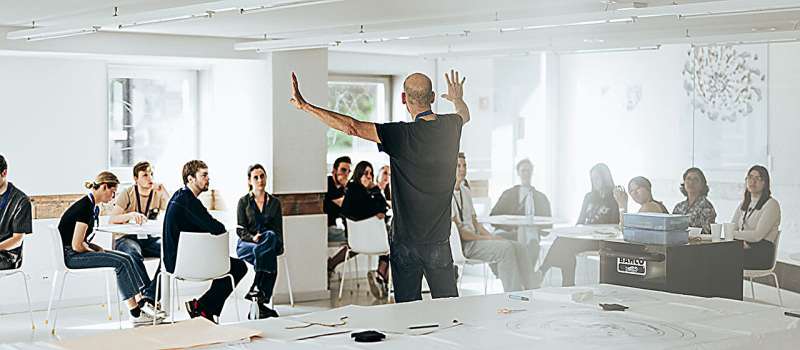This article has been reviewed according to Science X's editorial process and policies. Editors have highlighted the following attributes while ensuring the content's credibility:
fact-checked
trusted source
proofread
Breaking into the black box of pedagogical authority

How does pedagogical authority operate in the classroom? A team from the University of Geneva (UNIGE) and the University of Teacher Education, State of Vaud (HEP Vaud) has produced one of the first in-depth field studies on this subject.
By filming teachers in training over a period of several months, the researchers identified different ways of exercising teaching authority and assessed their effectiveness. They found that strategies based on double addressing—i.e., addressing several students or groups of students simultaneously, using two different communication channels—were particularly effective. These results have been published in the journal Teaching and Teacher Education.
In the classroom, teachers' authority is no longer readily accepted by students. In the face of changes in society, its traditional exercise—based for instance on threats, coercion and habits—has lost its legitimacy. To obtain the consent of their students, teachers have to adapt to this new context and build up their authority on a daily basis, depending on the class and the learning situation. New approaches need to be invented to enable both novice and more experienced teachers to gain the support of their students.
To date, few studies have documented the interactions between teachers and students in situations where authority is exercised. To address this, a team from UNIGE and HEP Vaud set up an innovative video system in twenty-four secondary-level classes in the state of Vaud (433 students in total, aged 12 to 15), which they coupled with interviews revealing the professional experience of the teachers (10 in all, in training). The survey lasted six months.
Innovative approach
"We put a stand-alone wide-angle camera in each classroom to get a view of the teacher and students. The teachers wore a tracer around their necks which enabled the camera to follow their movements within the classroom," explains Valérie Lussi Borer, associate professor, head of the AFORDENS group and member of the Video Learning Lab at the UNIGE's Faculty of Psychology and Educational Sciences, who directed this work.
At the end of the lessons, the teachers were asked to identify the most significant authority situations of the day and their objectives during them. The relevant episodes were then viewed with them to ''confront'' them and measure the gap between their expectations and reality. This method made it possible to identify different ways of exercising authority and to measure their effectiveness.
The most effective strategy
"Among the different methods of student-teacher interaction we identified, the most effective was the 'double addressing' strategy, which accounted for a third of the interactions filmed," reveals Vanessa Joinel Alvarez, associate professor in the AGIRS teaching and research unit at HEP Vaud, and the study's first author.
In these double addressing situations, teachers may combine direct and indirect communication, addressing one student to pass on a message to the rest of the group, or addressing the group to pass on a message to one student. In such a case, the apparent addressee is not the real addressee: the teacher is trying to pass on information indirectly to one or more other students.
Limiting power struggles
This is the case, for example, of teachers who, in order to prevent disruptive behavior spreading to the rest of the group, will intervene ostensibly with the dissipated student in order to convey, indirectly, a message of dissuasion to the group. The researchers also highlighted situations where the teacher addresses the whole class directly and one or two students indirectly, the aim being to send them a message without naming them explicitly, so as not to stigmatize them or reinforce social comparisons between students.
"We have found that this strategy is very effective in preventing disruptive behavior. It allows teachers to limit confrontation, which is not very effective with teenagers," explains Vanessa Joinel Alvarez. By not confronting the student directly, teachers avoid getting involved in a power struggle and also enable the student to save face with his or her peers.
The results have already been applied to new in-service training courses for teachers offered by the HEP Vaud and the University Institute of Teacher Education at the UNIGE. These courses provide teachers with the tools they need to better understand the way they interact with students in class and the impact of these interactions on the classroom climate.
More information: Vanessa Joinel Alvarez et al, Breaking in the black box of pedagogical authority. Combined analysis of video and think-aloud protocols, Teaching and Teacher Education (2023). DOI: 10.1016/j.tate.2023.104310
Provided by University of Geneva





















